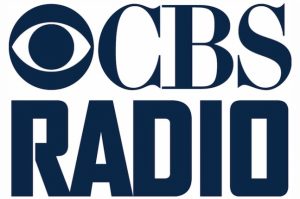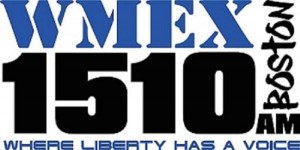NorthEast Radio Watch 12/23 & 12/30/2024: WKIT Lives!
In this week’s issue… WKIT finds a buyer - Eskin out at WIP - Staff shifts in Utica - CRTC approves Bell divestitures
By SCOTT FYBUSH
It’s that time again: at long last, we’ve arrived at the end of a challenging year, both for the industry as a whole and for your editor personally. And that means we take a break from our weekly roundup of industry news for our 21st annual Year in Review edition. Year in Review installments will appear daily all week long through our wrap-up on Saturday, January 3, so check back every day for a new installment. We’ll resume our regular NorthEast Radio Watch report on Monday, January 5, 2015, and Tower Site of the Week is back Friday, January 9, 2015. (And in the meantime, our own Twitter and Facebook feeds and RadioInsight will be here with any breaking news!)
Back to Part Four: The Year’s Top Ten Stories, #10-#6
Error, group does not exist! Check your syntax! (ID: 10)
Over the last few days, we looked month-by-month at all of the programming, people and callsign changes we covered during the year (see our January to June list here, and July to December here.) And we looked at the year in station sales here.
But what stories made the biggest headlines in 2014? With a tip of the hat to the departed Casey Kasem, we’re counting them down in our annual list of the news items and trends that caught our attention throughout 2014…
[private]


What did Clear Channel (now iHeart Media) want with such a small, seasonal market at a time when it’s slowly exiting its smaller-market positions? The answer turned out to be the signal of WCIB (101.9 Falmouth), the last missing piece in a three-way move that will trade some fairly significant downgrades in smaller markets for a small but important upgrade in Boston.
By taking WCIB directional and reducing its power somewhat and by dropping WWBB (101.5 Providence) all the way down from class B to class A, iHeart can eliminate the directional antenna that’s kept WBWL (101.7 Lynn) from having much signal south and west of Boston.
2014 was, of course, the year when iHeart swapped out its dance “Evolution” format at 101.7 (ex-WEDX) for country as “the Bull.” That format change seemed to be a strong move at first, as “Bull” surged to some of the highest ratings the 101.7 signal has enjoyed in decades. But that initial ratings boom died down relatively quickly, leaving the Bull back in spoiler mode hoping to shave just enough from Greater Media’s market-leading WKLB (102.5) to keep it from threatening iHeart’s #1 WXKS-FM (Kiss 108).
Was that worth the $14 million Clear Channel paid for 101.7, not to mention the potential loss of ratings and revenue at WCIB and especially WWBB, which won’t be heard in outlying parts of the Providence market once its downgrade takes effect? (And at WWBB, in particular, the downgrade process has been far from smooth: after initially proposing to use one tower at WHJJ 920, the new class A site has been shifted to a downtown skyscraper where the FM signal caused some immediate interference problems. It now appears the class A WWBB may instead be headed for the tower of sister station WHJY 94.1 in East Providence when the dust all settles.)


The issue wasn’t real-world RF interference but rather a conflict in virtual channels between PMCM’s channel 3 (renamed WJLP) and two established “channel 3″s using UHF RF channels, WFSB in Hartford and KYW-TV in Philadelphia. WFSB, in particular, put up a fight over the use of channel 3 in Fairfield County, within the New York City market but an area where WFSB has significant cable viewership.
While WJLP offered some concessions (including cable channel 3 in Fairfield county and the use of virtual 3.10 instead of 3.1), WFSB didn’t yield, and at year’s end WJLP had secured a temporary stay allowing it to sign on as “3.10” while the courts determine what virtual channel (and thus what cable channel) the MeTV signal will use in the long term.
And while WJLP hung its hat on a long-ago Congressional desire to provide more TV “service” to New Jersey, at the other end of New Jersey, there was no “long term” for WMGM-TV (Channel 40), which really did offer local news to a part of the state that had few other information sources on the airwaves. The end of 2014 marked the end of local service to the Atlantic City area from “NBC 40” as the station entered the hands of a spectrum speculator who’ll soon sell off its space on the UHF dial.


By that standard, Philadelphia has been a challenge: in that very large market, CBS has had just two FMs (sports WIP-FM 94.1 and classic hits WOGL 98.1) to go with three AMs, including big all-newser KYW (1060).
That changed in December, when CBS closed the deal on a swap that sent its stations in Tampa and Charlotte to Beasley (along with CBS Sports Radio outlet WIP 610 in Philadelphia) in exchange for Beasley’s Miami stations and two Philadelphia FMs, country WXTU (92.5) and rhythmic hits WRDW-FM (96.5). The move does more than just give CBS four FMs, tying it with iHeart and Greater Media for the largest FM clusters in the market – it also opens some possibilities for CBS in the years to come. For now, CBS seems content to keep KYW on the AM dial, but if the challenges to AM revenue increase, it’s not hard to imagine one of its signals becoming a new KYW-FM. And in the meantime, it’s likely the new year will at least bring some freshened “Amp” branding to what’s now “Wired” on 96.5.
(For Beasley, meanwhile, the swap means more than just the addition of healthy clusters in two booming southern markets; it also adds what’s now WTEL 610 to a surprisingly profitable group of leased-time AMs in Philadelphia, Boston and elsewhere.)
[/private]
Error, group does not exist! Check your syntax! (ID: 10)
[private]


Take, for instance, the $30 million Clear Channel paid Buckley for WOR (710) back in 2012. After spending 2013 rebuilding the station with new studios, 2014 was supposed to have been the year WOR relaunched with a more potent programming lineup.
Oops.
The Mets? They had a typically Mets-ish season, of course, and by midsummer their games were a draw only for die-hard Mets fans (who have this column’s deep sympathies, as always.)
Rush Limbaugh? His move from longtime home WABC (770) proved to be a draw only for die-hard Limbaugh fans, who are aging farther out of the sales demo every year.
And even before the Mets threw their first pitch, WOR’s big plans to entice its new baseball audience to stick around for a new morning show fell apart in spectacular fashion. What was the point of taking DC-based FM rock morning man Elliot Segal and adding him to the Rush/Mets lineup? We’ll never know, because after only a few weeks on the air at WOR, “Elliot in the Morning” was pulled from the schedule, leaving behind a custom-built studio that reportedly failed to meet Segal’s demands.
It also left behind a hole that stayed unfilled for the rest of the year. Who’s doing mornings at WOR? The answer shifts from day to day, it seems, though Hilarie Barsky has become as permanent as a substitute host can be.
For whatever it’s worth, WOR wasn’t the only New York station with morning instability. Uptown at Cumulus, Don Imus grumbled about possible retirement from WABC and Scott Shannon exited WPLJ (95.5) after almost 23 years, leaving Todd Pettengill behind while taking on a new morning job at WCBS-FM (101.1). Down the hall, though, fellow CBS stations WWFS (102.7 Fresh FM) and WBMP (AMP 92.3) had their own morning turmoil: WWFS ousted morning man Jim Douglas, and AMP’s midyear name change left it without a morning show for the rest of the year.
(And then there was Pacifica’s WBAI 99.5, where everything remained just plain unstable for yet another year…)


So you try to make things just a little better for yourself. You go after a gig at the new FM talk station, only to find that the lawyers have locked you in at your current AM home for a few more years – just long enough, as it turns out, for the shine to go off the FM talk apple. And so just when you’re finally free, at long last, to leave that AM signal where you don’t want to be…it turns out all the other possibilities have dried up.
Which is how the guy who’s spent untold hours over the last few years bemoaning the lousy night signal at WRKO (680) found himself trading it in for the far lousier night signal of the only other Boston station where he could plausibly fit in, third-tier talker WUFC (1510), newly rebranded WMEX for the benefit of whoever still remembers the last dying gasps of WMEX on that frequency almost four decades ago.
Sure, Carr’s managed to fill in some of WMEX’s holes with additional signals in surrounding communities to add to his regional network. But it’s hard to imagine that the Howie Carr of, say, 2008 would have been very impressed by where the Howie Carr of 2014 ended up landing after WRKO, and it’s hard to imagine the new WMEX making any sort of dent at all in the market. (Did we mention the morning show is about….motocross?)
Carr’s own personal woes are, of course, just one part of a much bigger story here, which is why we put him in the number-one slot at the end of 2014. For a format and a station that once had the power to defeat politicians and repeal laws, WRKO without Carr was in about as bad shape as Carr without WRKO. And from market to market, it didn’t get much better. While Buddy Cianci’s electoral defeat meant a triumphal return to Providence’s successful WPRO, the rest of the talk landscape was bleak: beyond the mess at WOR and WABC in New York, there was John Rowland’s disgrace at Hartford’s WTIC, Dick Morris’ failure to thrive at Philadelphia’s WPHT and Clear Channel’s wholesale throwing in of the towel at Pittsburgh’s WPGB, where the talk format was shuffled off to AM so the FM could go country.
[/private]
And for us, at least, that’s what 2014 looked like. Disagree with our choices? Have some suggestions for what else we should have included? Sound off in our comments section below, or come chat at the RadioInsight Community – and have a great new 2015!
Error, group does not exist! Check your syntax! (ID: 10)
> > > Continue to Part 6: The Year in Obituaries

Behold, the 2025 calendar!
We chose the 100,000-watt transmitter of the Voice Of America in Marathon, right in the heart of the Florida Keys. This picture has everything we like in our covers — blue skies, greenery, water, and of course, towers! The history behind this site is a draw, too.
Other months feature some of our favorite images from years past, including some Canadian stations and several stations celebrating their centennials (can you guess? you don’t have to if you buy the calendar!).
We will ship daily through Christmas Eve. Place your order now for immediate shipping!
This will be the 24th edition of the world-famous Tower Site Calendar, and your support will determine whether it will be the final edition.
It’s been a complicated few years here, and as we finish up production of the new edition, we’re considering the future of this staple of radio walls everywhere as we evaluate our workload going forward.
The proceeds from the calendar help sustain the reporting that we do on the broadcast industry here at Fybush Media, so your purchases matter a lot to us here – and if that matters to you, now’s the time to show that support with an order of the new Tower Site Calendar. (And we have the new Broadcast Historian’s Calendar for 2025 ready to ship, too. Why not order both?)
Visit the Fybush Media Store and place your order now for the next calendar, get a great discount on previous calendars, and check out our selection of books and videos, too!
In this week’s issue… WKIT finds a buyer - Eskin out at WIP - Staff shifts in Utica - CRTC approves Bell divestitures
In this week’s issue… WBUR backs off local talk - EMF's expansion in NY, nationally - Rochester broadcasters honored - Russell finds new PA radio home - Remembering Bruce Stevens - The new calendar's here!
In this week’s issue… Remembering WNY's Palvino, Harris - Will King sell Bangor stations? - Kay moves earlier - New signal on LI - Cumulus cuts hit PA, New England - Frizzell sells in NH
In this week’s issue… Saluting a small-town radio vet - Bell moves CP24 - Scott heads west - Burlington gets Air 1, "Experimental Radio" - Family Life heads down I-86